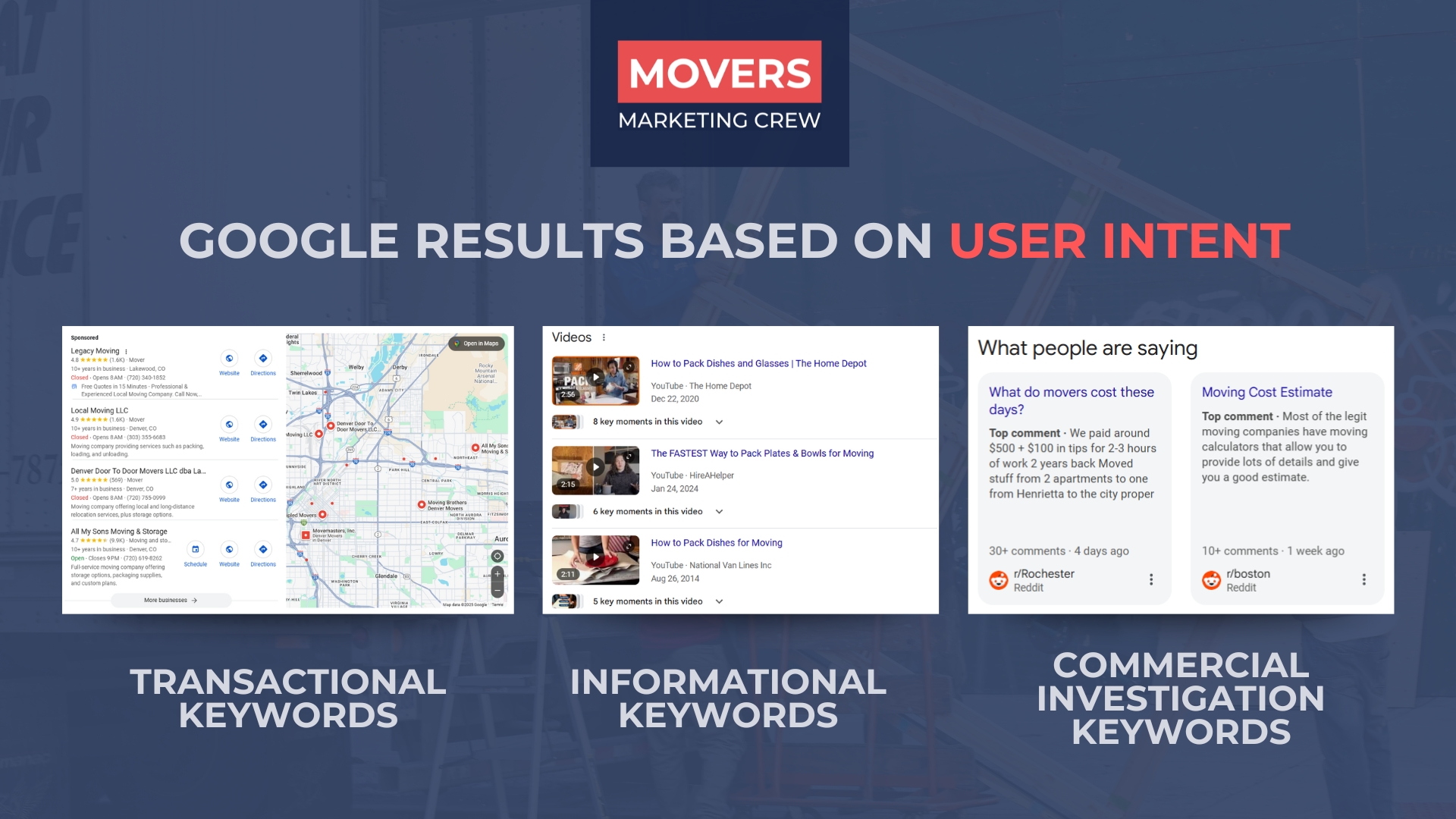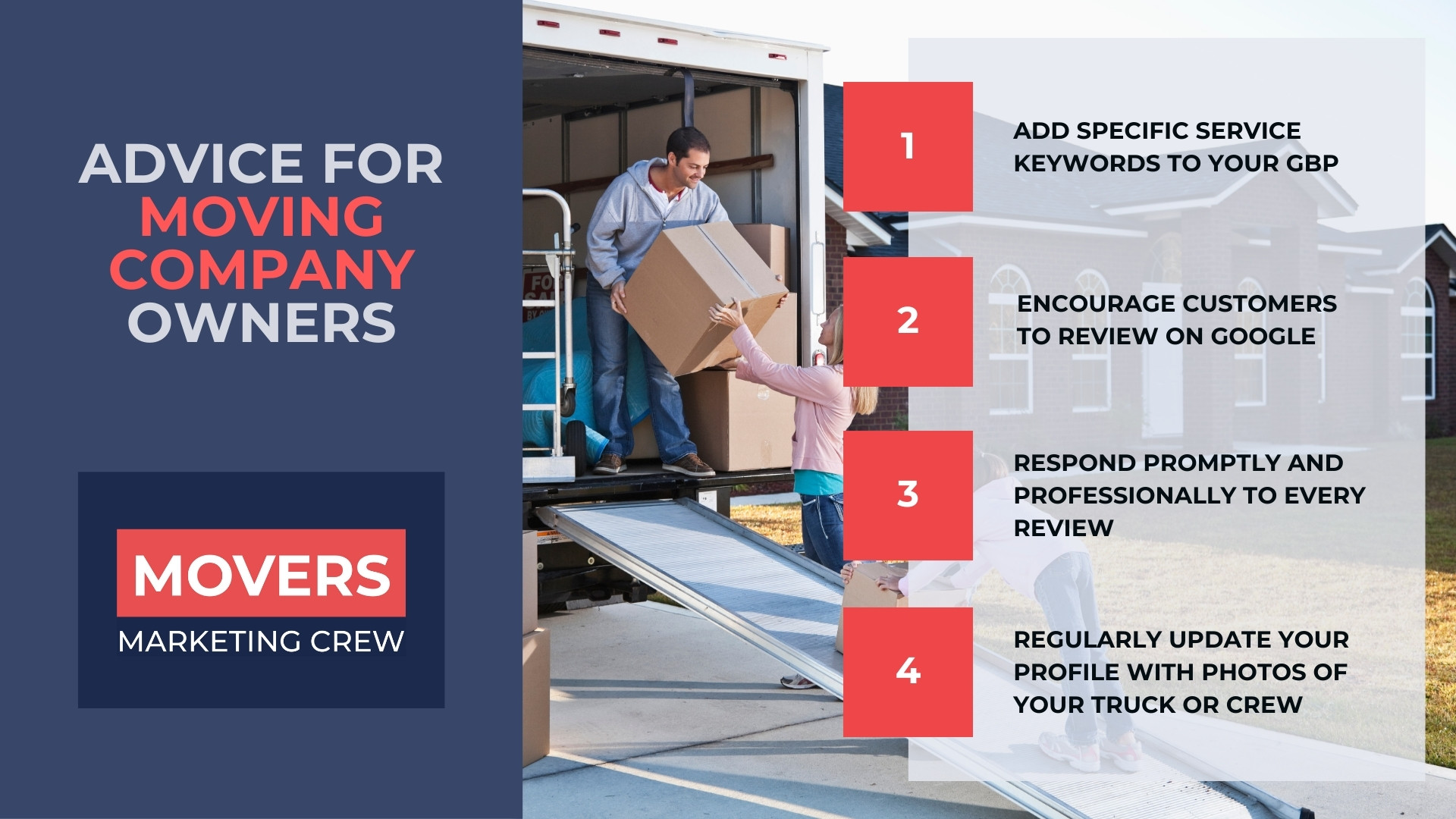When it comes to Google, it’s not just about searching for a term and getting a large list of clickable links. Google’s main priority is to satisfy the user, ensuring the right content is provided in a matter of milliseconds. That is why Google explicitly advises a “people-first” approach to content, meaning your website and profiles should be created for real people (customers) – not just to trick search engines.
Google Is Not Just a Search Engine – It’s Focused on User Experience
People are using Google when they have some kind of a problem, and Google’s main objective is to provide the best possible solution to that problem. In practice, Google tries to understand the intent behind each search and then deliver the most useful results. For example, Google’s recent updates (RankBrain, BERT, etc.) focus on context and meaning, so it can distinguish between someone looking for advice vs. someone wanting to hire movers. In short, Google “thinks” in terms of user intent and satisfaction rather than raw keywords.
For example, a query like “best way to pack dishes” is recognized as an informational intent (answer a question), so Google shows guides or videos. A query like “long distance movers near me” has local intent (find a service nearby), so Google shows business listings and contact info first. The lesson for moving companies is to focus on real customer needs: answer questions, be easy to contact, and build trust.
Local Businesses Work Differently in Google Than Informational Topics
Broadly, search queries fall into categories like informational (learning something) or local (finding a service to hire). Informational searches ask “how,” “what,” or “why.” For moving companies, “moving tips,” “how to pack fragile items,” or “what is a moving estimate” are informational. Google often answers these with articles, how-to guides, FAQ pages, or a quick answer box.
By contrast, local searches include geo terms or “near me” (e.g. “movers near me,” “moving company in Denver”). These signal Google to show the local pack (map + business listings) and Google Business Profiles, not general articles.
Google reports nearly half of all searches have local intent, and 88% of mobile searchers for a local business end up calling or visiting a shop within 24 hours.
Keywords Like “Movers” and “Moving Tips” Trigger Different Results

While using Google, you might have seen different formats in which you get your answers. That is because Google recognizes different type of queries, and provides appropriate results based on that specific keyword. SEO experts categorize keywords by intent: informational (learn something), commercial (research options), and transactional (ready to buy). For moving companies, different keywords fall into these buckets:
- Transactional keywords (buyer intent): e.g. “movers in Denver,” “best moving companies,” “book moving service.” These imply the user wants to hire a mover now. Google treats these as local queries and shows the Map Pack with contact info and three top businesses.
- Informational keywords: e.g. “moving tips,” “how to pack dishes,” “decluttering before move.” These imply a user is researching or learning. Google will show article links, videos, or featured snippets rather than business listings.
- Commercial investigation keywords: e.g. “how much do movers cost,” “cost of moving company,” “movers quote.” These indicate the user is comparing or checking pricing. Google may show a mix of content: summary answers, comparison articles, and often a “People also ask” (FAQ) box with related questions.
The Keyword “Movers” Can Mean Many Things – So Google Mixes Results
Searching for such a broad term such as “movers” can be a real challenge for search engines, because it’s hard to assess user’s intent from such a limited amount of information. That is why Google might show a variety of listings (maps, websites, questions, etc.) to cover all possible intents. For instance, someone searching for “movers” could be looking for a local moving company, tips on moving, pricing estimates, or even job opportunities in the moving industry. By listing a variety of formats, there is a higher chance that user gets what he wants on the first try.
Your Website and GBP Should Focus on Sales, Not Education
Being an owner of a business, your main objective is to be noticed in search results when someone needs your service. When people search for a term like “moving companies near me”, they need a clear overview of local companies that provide those services, and ideally a quick way to acquire them. You might have some great articles and educational videos on your site which are perfectly optimized for search engines, but if you are not making sure your business is optimized for transactional keywords that show buyers intent, you won’t get any customers from google.
Google rewards sites and profiles that make it easy for users to take the next step. For a moving company, that means clear calls to action (CTAs) and complete, accurate info. For example, Google’s support docs note that a complete Google Business Profile makes customers 70% more likely to visit and 50% more likely to consider buying from you. In practice, this means filling out every field in your GBP (business hours, phone, service area, pictures, etc.). It also means having a website that loads fast on mobile and prominently displays contact info and quote forms.
Key elements for conversion: Make sure your website’s phone number is clickable (toll-free numbers link on mobile) and front-and-center. Add a “Get a Quote” or “Call Now” button on your homepage and service pages. Include a simple contact form for free estimates. Also ensure your site is mobile-friendly and quick to load: studies show 53% of mobile visitors will abandon a site if it takes over 3 seconds to load.
Educational Content Still Helps – If It Matches What People Care About
Like we already said, Google’s main objective is to satisfy the user, and if you have the appropriate answers on your site, Google will reward you with good positioning on their results page. Try to make educational content that answers most of your potential customers’ questions. Let’s say someone is searching for “commercial moves“. That person is probably interested in such service and wants to know a little bit more about it. Having a well written educational content (in form of articles, FAQ pages etc.) can help this person understand what kind of commercial moves you are doing, how long does it take, what’s the price, and you can even put in extra details, like the option to have it done outside of working hours. If a person is satisfied with all the answers, with a simple call to action, you are getting a potential customer.
Google Rewards Companies That Provide Good Experience
Be active
Activity signals are huge in local search. Keeping your Google Business Profile fresh and engaged tells Google you’re an active, reputable business. Each new review, Q&A entry, or post is a signal that your business is alive and well – and helps keep you in Google’s good graces.
Constantly get positive reviews
The single most important factor is reviews. Google’s local ranking uses prominence as a factor, which includes review count and ratings. More positive reviews generally boost your position. Practical steps: Ask every happy customer to leave a review. A small increase in star rating has a big payoff: one study found businesses that lifted their Google rating from 3.5 to 3.7 stars saw ~120% more conversions. Always respond to reviews (good or bad) – replying shows you care, which builds trust. In fact, 89% of consumers said they were more likely to use a business that responds to reviews, while 57% said they won’t use a business that never replies.
Keep relevant informations up-to-date
Also keep your profile information up-to-date. Google explicitly advises keeping hours, services, and photos current so the profile stays relevant. For example, adding new photos or Google Posts about current promotions makes your listing more engaging. Use the Q&A section: proactively post common moving FAQs (and answer them) so searchers get instant info.

Conclusion
In today’s search-driven world, simply having a website isn’t enough – moving companies must understand how Google works and align their online presence with user intent. Google prioritizes relevance and user satisfaction, so businesses that anticipate what users are searching for – whether it’s local movers, pricing, or packing tips – will earn better visibility. By optimizing for transactional keywords, maintaining an active and complete Google Business Profile, and offering fast, mobile-friendly websites with clear calls to action, moving companies can convert searchers into customers. At the same time, educational content that answers real questions helps build trust and authority. In short, to succeed on Google, focus on user experience, solve real problems, and make it easy for people to take the next step.
